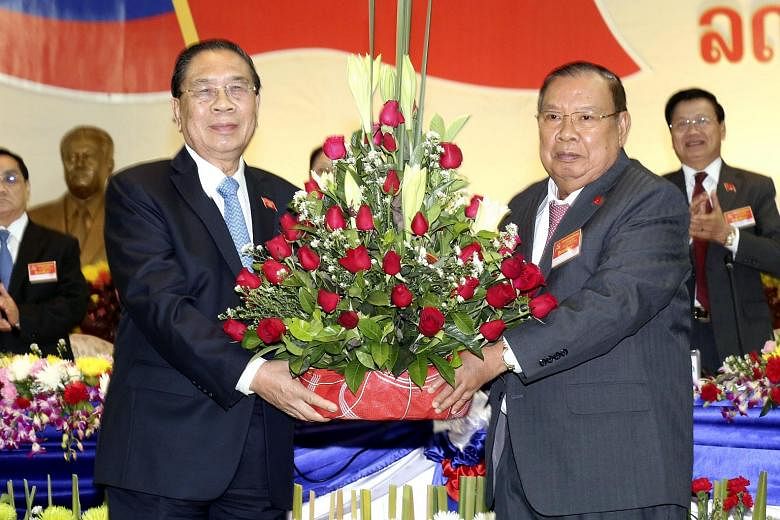In its editorial on Jan 26, The Nation says that with Vientiane chairing Asean, Mr Bounnhang Vorachit - the new ruling communist party chief who is also chairing the regional grouping - will have to ensure that he can cope with both his responsibilities.
Last week's promotion of Laos Vice-President Bounnhang Vorachit to head the ruling communist party and the country signals an upheaval in leadership that has implications for the whole region.
Mr Bounnhang was picked to lead a nation pushing to meet impressive benchmarks for socio-economic development, while at the same time taking the regional helm as this year's chair of the Association of South-east Asian Nations (Asean).
The party's decision to appoint Mr Bounnhang as leader, replacing President Choummaly Sayasone, came as a surprise, since he's spent the last decade keeping a low profile as vice-president.
He is hardly a political novice, of course. Mr Bounnhang participated in the struggle for independence in the 1950s and later commanded Pathet Lao forces battling the US-backed royalist government.
After their victory in 1975, he joined the new communist government and rose to prominence in his home province of Mr Savannakhet during the "new economic mechanism" (Jintanakanmai) of the mid-1980s. He was appointed to the party's central committee in 1991 and five years later entered its inner circle of top decision-makers.
Between 1999 and 2001, Mr Bounnhang served as finance minister, overseeing an economic recovery in the wake of the 1997 regional economic crisis.
In 2001, he was named prime minister, at a time when the government was struggling to stifle a rising tide of public discontent over rigid rule and curtailed rights. His premiership lasted five years, but was tarnished by widespread criticism of passivity and a lack of vision.
Mr Bounnhang now faces serious challenges on both the domestic and the international fronts as he takes the country's helm once more. The heavy weight of expectation awaits him. Under his predecessor Choummaly, Laos' economy grew by 7 to 8 per cent annually and made impressive progress in meeting targets for poverty reduction.
At its annual congress last week, the Communist Party set an ambitious new goal of 7.5 per cent annual growth for the next five years - under Mr Bounnhang's leadership. It also adopted an action plan to lift Laos out of "least-developed" status by 2020. This will be no easy task, given that the world economy has significantly slowed.
The international challenges Mr Bounnhang faces are, if anything, even more daunting. Laos has taken the helm of Asean just as it launches a difficult project of region-wide economic integration and grapples with disputes over territory in the South China Sea pitting three member-nations against superpower China.
Although Laos is a landlocked country, the maritime storm brewing off the coast of mainland South-east Asia presents it with all sorts of problems.
First, as chair of Asean, it has a duty to champion the interests of all member-nations. Second, it has its own interests to guard as a neighbour and trading partner of China. Third, China and Vietnam have significant historical influence over Laos, but they are now embroiled in conflict over territory in the South China Sea.
Finally, the US, whose Secretary of State John Kerry visited Vientiane over the weekend, is seeking to curb China's ambition to control the whole of the troubled sea.
Hence, decisions made by the government under Bounnhang's leadership will have consequences not only for Laos but for the entire region.
* The Nation is a member of The Straits Times media partner Asia News Network, a grouping of 22 newspapers seeking to promote coverage of Asian affairs.

